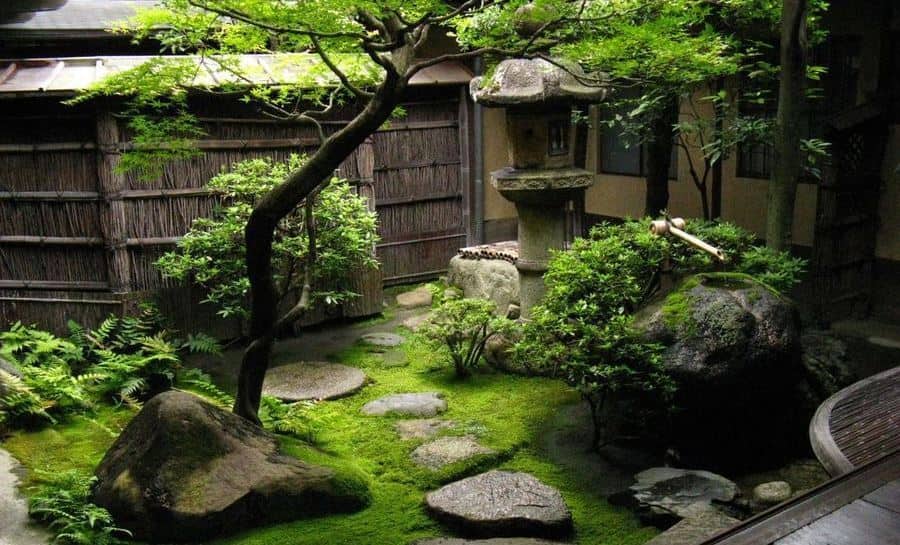If an ordinary garden is already synonymous with relaxation and tranquility, what about a Zen garden? Just by name you can feel the calm and peace, right? This particular type of garden is also known as the Japanese garden, since its origin is directly linked to the Buddhist monks of the country. The Zen Garden is an ancient tradition dating back to the 1st century AD. This green space was designed for the purpose of ensuring well-being, inner re-connection, inspiring vitality and serenity, and of course being the ideal place for meditative practices.
First of all you need to know that a Zen garden carries the characteristic of simplicity, so the idea here is that of the classic “less is more”. The Zen garden also advocates fluidity and freedom of movement. Another strong feature of this type of garden is its versatility, it fits anywhere, literally. You can build a Zen garden in the backyard, taking advantage of all the available space, or build a miniature Zen garden for your desk.After defining the location and size of your Zen garden, it is time to think about the elements that must be present in this space in order for it to fulfill its role.


Sand / Earth
Sand or earth are key items in a Zen garden. These are the elements that represent the solidity and the foundation upon which everything exists. Sand or earth, within the Zen garden concept, further symbolizes the transmutation of energies and the neutralization of all negative thoughts and emotions.
The stones serve to remind us of the obstacles and setbacks of the path, no matter how large they may be, will always be there teaching you something. Stones – which can be rocks or crystals – also represent life-accumulated experiences and act as energy generators helping to balance the environment and people. They say that to be lucky, the ideal is to use stones in odd numbers.
Garden without a plant is not a garden, is it? Only in a Zen garden, the ideal is a few plants that are practically arranged in the environment and that allow for fluidity and movement. The most commonly used plants in a Zen garden are bouquets, pines, bamboos, azaleas, orchids, as well as grasses and mosses. Another good option is to use bonsai in the composition of the Zen garden, especially in those smaller boxed models.
Water is the generating element of life and needs to be present in a Zen garden. You can insert this element with a small lake or a font. In the small Zen garden, in turn, the water is represented by the sand used inside the box, as this element symbolizes the sea.
The rake, that kind of wooden rake, is the instrument of interaction with the Zen garden. Its function is to help relax the mind as the designs are created in the sand. The straight lines represent tranquility and the curved lines agitate, similar to the movement of sea waves. Both small and large zen gardens can and should make use of the rake.
Incense is the representation of the air element and represents the fluidity of thoughts. In addition to aromatics, incense sticks help the mind relax, leading meditation more easily.
Lighting is of great importance in the Zen garden, both aesthetically and functionally. You can choose to use lanterns, lamps, candles and even a bonfire area to bring the light into your garden.
Other accessories that can be used in the Zen garden are Buddha statues, Ganesha and other sacred entities of the Eastern religions. It is also common to use bridges if the Zen garden is large. Some pillows and futons help make the space more cozy and comfortable.
We have some creative Zen gardens for you in the following gallery.
This website uses cookies.